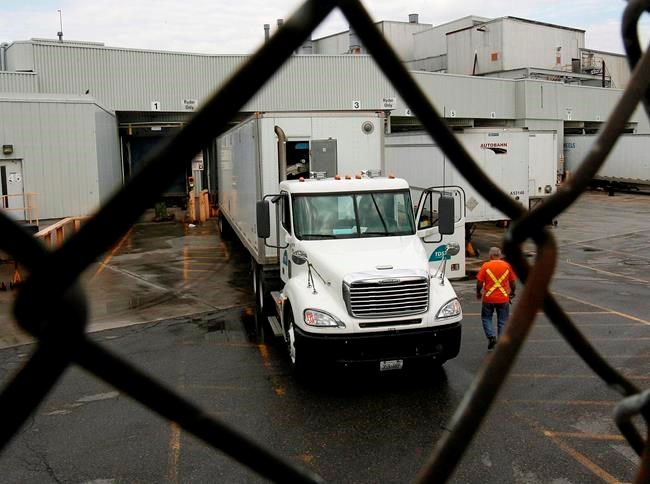MONTREAL — Canada's truck driver shortage has reached new heights, with job vacancies more than doubling since 2016, a new report says.
A shortage of more than 20,000 drivers has hampered truck company expansions and hurt sales, costing nearly $3.1 billion in lost revenues in 2018, according to trade group Trucking HR Canada.
Developed in partnership with the Conference Board of Canada, the report found that job vacancy in the industry hit 6.8 per cent in 2019, more than double the Canadian average and the highest rate outside of crop production.
An aging workforce, lack of female drivers and high turnover account for the growing problem, conference board economist Kristelle Audet said.
Up to 60 per cent of the sector is older than 45 compared with 45 per cent of the Canadian workforce, she said.
While more women are entering the 18-wheeler workforce, female big-riggers still account for just 3.5 per cent of drivers.
Turnover is high across the industry, but long-haul driving in particular faces a 9.4 per cent job vacancy rate, the report found.
The industry is revving up efforts to attract and retain younger employees and women.
Social media campaigns stress more flexible schedules and better work-life balance, and summits with names like Millennials Have Drive zero in on target demographics to head off a forecasted 25 per cent rise in job vacancies over the next four years.
"We need to get the message out that trucking is changing," Trucking HR Canada chief executive Angela Splinter said.
The chauffeur shortage can hit small businesses particularly hard, Audet said. Trucking firms with annual revenue under $1 million that are down a driver find their revenues drop by up to one-quarter — a problem in an industry where 70 per cent of firms have fewer than 20 workers.
Putting more pressure on payrolls is the rampant growth of online retail and direct-to-consumer deliveries. Demand for drivers has shot up as more trucks pull in and out of Walmart distribution centres and UPS, Purolator and Canada Post hubs, Trucking HR Canada said.
The eight-day CN Rail strike in November and rolling rail blockades in February further underscored the number of "unseated trucks," Splinter said, as companies scrambled to find alternate modes of transit.
Linda Young, who chairs the trucking HR association’s Women With Drive initiative, said impressions of a sector sometimes associated with unglamorous lifestyles and carrying a reputation for machismo remain a hurdle, despite an average driver salary of $67,500.
Drivers can be on the road between 10 and 14 days straight, sometimes sleeping in their cabs — typically outfitted with beds, a mini-fridge and a microwave — on client lots or, occasionally, roadsides.
Launched in 2016, Women With Drive aims to raise the number of women behind the wheel through awareness campaigns and resources for employers.
The sector hopes to hire 25 female drivers per quarter and continue to raise the proportion of women, said Young, head of human resources for Winnipeg-based Bison Transport.
Meanwhile, only 12 per cent of younger Canadians would consider a career as a long-haul driver, according to a survey of 2,000 millennials carried out by Trucking HR Canada and Abacus Data.
One barrier lies in access to funding for training, which can cost between $7,000 and $15,000, Splinter said.
"It’s not an apprentice-able trade like some other occupations, so there’s no access to OSAP loans in Ontario," she said.
Commercial truck driving is not classified as a skilled or semi-skilled trade, a category that can help fill worker shortages by allowing access to swifter immigration streams and more training resources.
Splinter said trade groups are lobbying provincial and federal governments for wage and training subsidies, but have "not yet" come up with funding.
This report by The Canadian Press was first published March 11, 2020.
Christopher Reynolds, The Canadian Press




